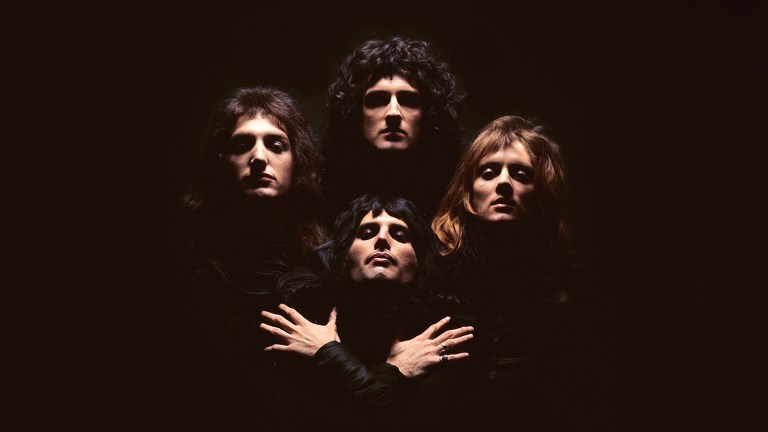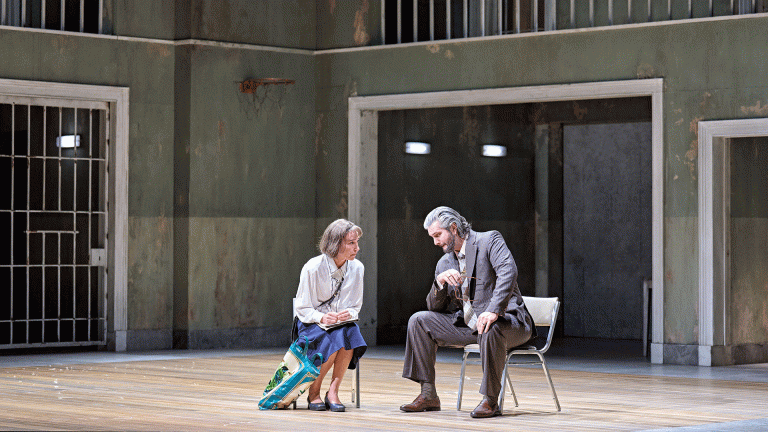A concert in a multi-storey car park, orchestra and audience gathered on level eight of an 1980s brutalist hulk of concrete in Peckham, south-west London. It all sounds rather JG Ballard-esque. Indeed, the entrance is grubby and litter-strewn, beside PeckhamPlex cinema. There’s a bouncer and heavy-duty metal barriers like one might see at a demo. At the box office, we’re given not a ticket but a wristband, as if we’re at a secret rave. The BBC Proms logo reassures us that we’ve come to the right place. It’s a hot day so a visit to the chemical loos on the top floor requires a deep breath and a strong stomach.
In fact the Bold Tendencies venue (which has been supported by Big Issue Invest), home to Multi-Story Orchestra, is far from dystopian. This ugly building is a modern utopia, revived as a popular space for art, drama, music, food and drink, shared purpose, community and conviviality. Twenty years ago presenting classical music in such a venue would have been laughable, but this is the second year the Proms have ventured from the splendour of the Royal Albert Hall to Peckham.
Traditional rules of engagement are relaxed. Complaints about extraneous noise or inappropriate applause are redundant, for the music is regularly suffused with rattling trains and honking traffic on Peckham Rye. The acoustics in this uncompromisingly stark venue are surprisingly good: low ceilings amplify and funnel sound, the proximity of orchestra to
audience gives compelling immediacy. There were children and babes in arms, and there’s a rather cool bar on the top floor where they mix a mean Negroni. But the commitment to the performance was proof you can hold a concert anywhere provided musicians and music are of the highest standard. The venue is unusual, but there’s nothing novel about Multi-Story Orchestra.
The acoustics in this uncompromisingly stark venue are surprisingly good: low ceilings amplify and funnel sound, the proximity of orchestra to
audience gives compelling immediacy
Bach’s beautiful chorale prelude Wachet Auf, ruft uns die Stimme (Sleepers Awake!), opened the concert, its tender and meltingly familiar melody played with enveloping warmth. John Adams’ gigantic, absorbing Harmonielehre was the central work. A symphony in all but name, inspired by Adams’ surreal dreams, this three-movement work pays homage to the monumental, rich romanticism of Mahler, Wagner, Sibelius and pre-atonal Schoenberg. Adams fuses familiar elements of minimalism – spooling motifs, complex rhythms, shifting time signatures – with the opulence of fin-de-siècle romanticism: the second movement is a palimpsest, recalling the Adagio of Mahler’s 10th, its rich textures and haunting melodies interwoven with sparkling percussion and trembling strings. From the booming, powerfully attention-grabbing repeated chords and propulsive energy of the first movement to the third, unfolding like the sunrise prelude of Schoenberg’s Gurrelieder before building in intensity to an astonishing, emphatic blaze of sound, this performance enthralled, sounds of the city absorbed into full-bodied surround-sound.
Kate Whitley’s I Am I Say, written in 2016 for local schoolchildren, was performed by Multi-Story Youth Choir, a wonderful group of young voices whose clear diction presented the music’s forthright message of hope and anger. This energetic and empowering work is built on subtle repeated motifs; the music ebbed and swelled to fill the car park in a rousing and expressive finale.









